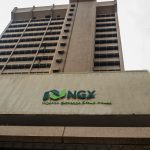
By United capital Research
Earlier, SEPLAT published its H1-2020 earnings, recording a basic loss per share from continuing operations of -$0.19 vs earnings per share of $0.21 in H1-2019. No doubt, the COVID-19 pandemic affected the prices of the Energy giant’s main product, as revenue declined by 34.2% y/y to $233.6mn. The company’s working interest production for the period was 51,177 boepd, within the company’s FY-2020 guidance of 47,000 boepd – 57,000 boepd, including the assets from the Eland acquisition. Going into H2-2020, we believe the gradual recovery in oil prices is positive for the firm, but more measures are needed to average down productions costs incurred from the acquisition. A critical look into its financial performance and outlook are further explained below.
Weaker oil prices counter benefits of increased liquids production post-Eland acquisition: For the period under review, SEPLAT recorded a 34.2% y/y decline in Revenue, to $233.6mn. This was expected, as the COVID-19 induced slump in crude oil prices negatively impacted the company’s operations, especially at the time where the Eland acquisition was finalised. As a result, despite the increased working interest oil production (grew 48.5% to 34,117bpd, mainly due to the onboarding of liquids production worth 10,861bpd from Eland’s assets -OML 40 & Ubima), the drop in its average realised crude oil price for the period (down 46.4% to $34.9/b), severely affected oil revenues, which constitutes 77.1% of SEPLAT’s business. On the gas business, production declined by 31.7% to 99 mmscfd, attributable to the 15-day turnaround maintenance taken on the company’s Oben gas plant. However, average realised gas price was higher at $2.88/mscf, than H1-2019’s price of $2.75/mscf. Worthy of note is the 61.6% decrease in total gas revenue to $53.5mn, as H1-2019 figure included a one-off gas tolling revenue received from the NPDC.
Notably, Cost of Sales grew at a relatively higher rate, by 32.3% to $195.9mn, conflicting with the decline in Revenue. This was the company recorded new costs worth $10.7mn, associated with barging and trucking at the Gbetiokun and Ubima fields (Eland assets), as well as higher operational maintenance expenses and DDA (depletion, depreciation, and amortisation). On a cost per barrel basis, we note the company’s production OPEX per boe rose to $7.6/boe vs $5.41 in H1-2019, pressured by higher costs associated with the Eland assets compared to SEPLAT only. In all, Gross margin thinned out to 16.1% in H1-2020, compared to 58.3% in H1-2019. Elsewhere, the company recorded a sizable other income of $51.4mn, from a $49.4mn under-lift (the difference between crude oil lifted and ownership share of production) worth $51.4mn and $2.0mn gain on foreign exchange.
Being an operator in an industry massively hammered by the pandemic, SEPLAT had to re-assess the value of its oil & gas properties, thus recording a huge impairment loss of $146.0mn. As a result, the company reported an Operating loss of $112.9mn. We note that without this impairment, the company would have reported an Operating profit of $33.1mn, 76.2% lower than H1-2019. Also, due to the increased borrowing to finance the Eland acquisition ($350mn revolving credit facility) and the $100 Reserved Based Lending facility acquired from Eland’s books, finance costs grew by 47.4% to $36.5mn, leading to a Net finance cost position of $34.8mn. In all, the company recorded a Loss before Tax of $145.3mn and a Loss after Tax of $110.2mn (Deferred tax income of $39.0mn reduced loss). Notably, this was against a Profit Before Tax of $120.4mn and Profit after Tax (from continuing operations) of $119.0mn in H1-2019.
On course for $120.0mn planned capital expenditure, despite the pandemic: Notably, SEPLAT spent about $85.9mn for CAPEX in H1-2020, of its $120mn CAPEX planned programme for the year. Notably, the investments were focused mainly on the completion of six oil wells across its Sapele, Ovhor, Ohaji South and Gbetiokun fields, as well as a gas well completed at the Oben field. The management also hinted on its Analyst Conference call, that H2-2020 will be primarily focused on drilling two gas wells. Elsewhere, total borrowing increased marginally by +1.3% y/y to $799.4mn, due to a $10.0mn drawdown by Westport (a financing subsidiary), from the Reserve Based Lending facility. This prompted an increase in leverage, as Debt/Equity ratio increased from 43.8% in H1-2019, to 47.9% in H1-2020. Overall, the company’s net debt position increased marginally to $456.8bn in H1-2020, from a net debt position of $456.4mn in FY-2019.
Operating cash flows lower than the preceding period: Analysing generation of cash from its core business, cash inflows from operating activities declined by 35.0% y/y to $165.8mn, given the profit made (excluding impairment) and a $97.7mn decrease in Trade and other payables. As a result, Operating Cash Flow (OCF)/ CAPEX ratio – a measure of how much operating cash flows cover capital expenditure – decreased to 2.0x in H1-2020, from 9.1x in H1-2019. However, the increased CAPEX for the period at $85.9mn, compared to $28.1mn in H1-2019, contributed to the ratio declining. Overall, total cash inflow generated fell by 22.9% y/y to $329.6mn, due to major cash outflows; CAPEX (- $85.9mn), equity injection into ANOH Gas Processing Company (- $30.0mn), finance charges (-$38.3mn) and others, as well as the decrease in cash inflow from operations.
Outlook: H1-2020 could be as bad as it gets for 2020: Given the gradual recovery in the global crude oil market, we expect oil prices to be more favourable to SEPLAT in H2-2020. Nonetheless, the company has put in place put options to hedge some of its production against oil price volatility – 1.5mmbbls at a price of $45.0/b for Q3-2020 and 1.5mmbbls at a price of $30.0/b for Q4-2020. Notably, the hedged position of 3.0mmbbls represents about 60.0% of the company’s total volume of crude oil lifted in H1-2020 (5.0mmbbls). Also, in line with the OPEC+ production quota assigned to Nigeria, the company disclosed it was advised a production quota cut between 20%-30% across its assets in July and August. We expect this to impact operations, however, the company maintains its FY-2019 production guidance of 47 kboepd – 57 kboepd. In terms of operations, we expect the company to remain cautious in terms of spending and liquidity management, as the management hinted on maintaining a core dividend of $0.05. Also, we expect the company to continue to drive cost-cutting measures across the Eland assets, in a bid to improve margins given the unfavourable oil prices to unlock better synergies from the acquisition. Furthermore, SEPLAT noted plans to pay down its $350m revolving credit facility and refinance Eland’s Reserve-Based Loan. In addition, the Amukpe-Escravos pipeline, which the company estimated for completion in H2-2020, would improve transportation for liquids production from the company’s assets under OMLs 4, 38 and 41, with the ANOH project still expected to come on stream byQ4-2021. Beyond 2020, we note that in the acquisition of Eland, SEPLAT acquired the right to be repaid $414.0mn from Westport (a financing subsidiary for OML 40) spread over 2022 to 2024. By implication, until the loan is repaid, Eland will hold a working interest of 45% in OML 40, after which it will revert to the original 20.25%.
SEPLAT rating maintained at a HOLD
Bearing the above in mind we maintain our HOLD rating, as the outlook on oil prices is gradually improving but below pre-pandemic levels. On more company-specific factors, very important for us in the continuous processes required to reduce the costs associated with the Eland assets, amid the difficult operating environment. Using the NAV methodology, we review our year-end target downwards from N552.5 per share previously, to N374.1 per share, presenting an upside of 20.6% from its current price.












